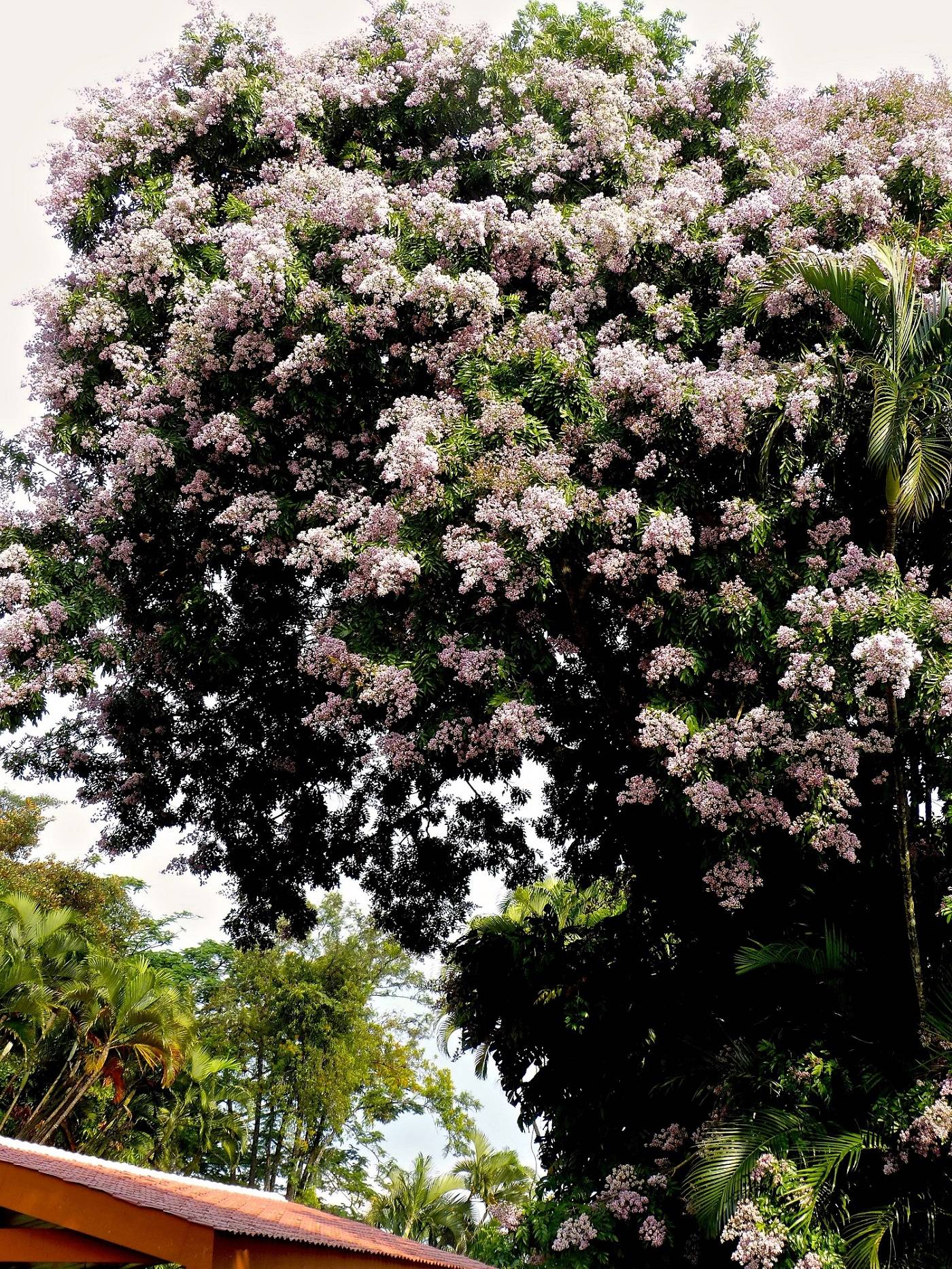
DESCRIPTION
Bark: Light gray, fissured, scaly, with an unpleasant, cabbage-like odor when damaged. Leaves: Deciduous, alternate, pinnately compound, to 16" long; leaflets in 7 to 13 opposite pairs, oblong to elliptic with pointed tips, each 2" to 5" long and 1" to 2" broad; dark, shiny green above, lighter and less shiny beneath. Flowers: Showy, pink to purple, pea-shaped; each to 1/2" long, borne in terminal or lateral clusters, very attractive to bees. Flowering in winter (January to February) and in summer (May to September). Fruit: Oval to elliptic, dark green and fleshy, to 2" long; each containing poisonous seed.
GROWTH RATE: Fast.
SALT TOLERANCE: Medium.
DROUGHT TOLERANCE: Medium.
PROPAGATION: Seeds, cuttings. Seeds are poisonous.
LANDSCAPE USES/LIMITATIONS
Handsome and showy in flower; can be planted for shade or ornament. Tolerant of a wide range of conditions. Untidy when large, dropping leaves, flowers, and fruits in large quantities. Seeds are poisonous.
USES
Highly decorative wood has been used in furniture and cabinet work, construction, bridge work and house framing.
CONSERVATION NEEDS
This tree has the ability to adapt to various sites and can produce large quantities of animal dispersed seeds. No immediate conservation needs are necessary.
Copyright ©2018. This project is managed by the St. George Village Botanical Garden and the portal development is powered by Symbiota software. Usage Policy.


